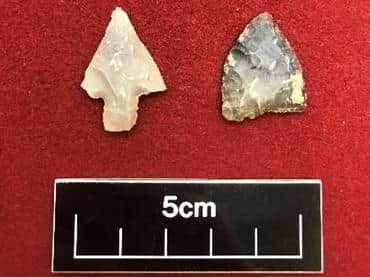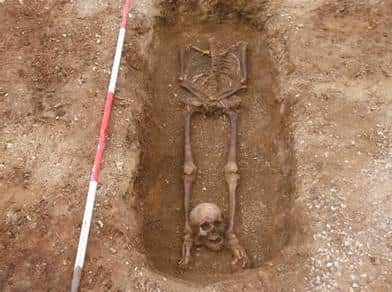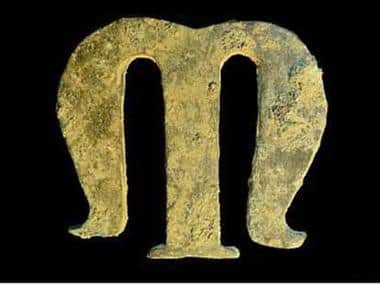Prehistoric flint arrowheads among archaeological findings at Black Cat roundabout as well as other sites in Bedford
and live on Freeview channel 276
Anglo-Saxon buildings, a late Iron Age settlement, Prehistoric flint scatters and an early medieval pit are just some of the findings during archaeological excavations in Bedford.
The council’s historic environment team have been busy in Biddenham, Wootton, the Black Cat roundabout as well as the former Clarence Hotel on St John's Street in Bedford.
Advertisement
Advertisement
Bedford Borough Council advises on sites prior to planning application to identify whether any important remains should be preserved on site or if further investigation is necessary ahead of development.


It will not normally grant planning permission for a development if findings of national significance are identified and cannot be preserved on site.
The council adds findings to the Historic Environment Record which can be viewed by the public.
BIDDENHAM SITE
One excavation on the edge of Biddenham uncovered a number of archaeological features, which include a middle-to-late Iron Age settlement including enclosures (possibly to keep their animals), at least one round house, large storage pits, a well and small cooking pits, as well as a number of Anglo-Saxon buildings and what is either an oven or kiln.


Advertisement
Advertisement
The excavation also uncovered a large ‘hengiform’ monument that potentially dates back to the Neolithic or Bronze Age (4000 – 700 BC).
WOOTTON SITE
The historic environment team also provided advice and guidance on a housing development on the land south of Wootton, where excavations revealed a late Iron Age settlement and a cremation cemetery containing 21 cremation burials.
Of the graves excavated, 15 contained near-complete urns and 13 contained additional vessels. The findings provide a valuable local example of burial practices in Bedford borough at the time of the Roman Conquest of Britain.


BLACK CAT ROUNDABOUT
As well as housing developments, the council advises on other applications, such as large-scale sand and gravel quarries within the Ouse Valley, including a quarry near the Black Cat roundabout on the A1.
Advertisement
Advertisement
The excavations identified a riverside landscape rich in human activity with archaeological remains dating from the late Middle Stone Age (Mesolithic) onwards, covering a period of approximately 7,000 years.
Notable findings include Prehistoric flint scatters, a Bronze Age working/production area, an Iron Age to early Roman shrine, a Roman farmstead with a cemetery, isolated Anglo-Saxon buildings, and a large riverside enclosure potentially representing the remains of a Viking winter camp.
CLARENCE HOTEL
The council also advises on urban archaeological sites, such as the redevelopment of the former Clarence Hotel on St John's Street in Bedford. The site is located on what is likely to have been the main north-to-south road through the town.
The earliest activity on this site included late Saxon quarrying, although the presence of a possible latrine pit suggests a contemporary dwelling nearby. A similar pit from the early medieval period was also found nearby, which was likely to have been associated with the structure and possible domestic activity, suggested by the presence of post-holes and small pits adjacent to a newly dug roadside ditch alongside St John’s Street.
The features revealed personal domestic objects, which appear to have been lost, broken or discarded by their owners.